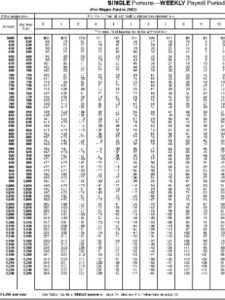
I encourage CPAs to assist their companies and clients that use QuickBooks to implement some of the aforementioned reporting tips in their reporting functions and better manage their businesses. To keep your new column width settings for future reporting, memorize the report. You can run the Sales by Item Summary report in QuickBooks Desktop instead of the Inventory Evaluation Summary to show the % of Sales, customer’s name, Gross Margin %, and many more columns.
Most of the items in the Item Profitability Report correctly report the Actual Cost and Actual Revenue. The filters are cumulative, which means a user could apply multiple filters to further refine a report. For example, a user might produce a report that summarizes the total revenue generated by sales representative “Daniel” in the state of Georgia.
Creating a Job Profitability Summary Report in QuickBooks
The cases where it does not, from what I observe, is when the item is billed from a vendor who is not the Preferred Vendor.. Our expert tax report highlights the important issues that tax preparers and their clients need to address for the 2024 tax year. Stay informed and proactive with guidance on critical tax considerations before year-end. To use this tool, from the QuickBooks Enterprise menu, select File, Utilities, Configure ODBC. In the resulting dialog box, adjust the sync settings as desired (typically, no setting adjustments are necessary), and then click OK. Thereafter, in Excel, select Data, Get External Data, From Other Sources, From Microsoft Query, and in the resulting Choose Data Source dialog box, select QuickBooks Data, and then click OK.

You don’t have any data damage. If QuickBooks finds an issue with your company file, select Rebuild Now. Balance sheets are useful for accountants to see your financial health and for banks when you are applying for loans.
Select a Country
- You can also check out this guide on customized inventory reporting for more information.
- When QuickBooks fails to deliver the precise reports you want, Microsoft Excel picks up the slack.
- Financial statements — such as a profit and loss statement, balance sheet or statement of cash flows — are a window into the health of your business and help you spot problems and opportunities.
- For most small businesses, the three basic financial statements are all you’ll need to get a good understanding of your business’s financial performance.
You will be looking for any transactions that have actual revenue without an actual health insurance cost offset. Once you find the sales receipt transaction, you can add the customer purchasing information to the Invoice, providing you with accurate numbers once again. Is there any way to get these on the same report so it can give us the profitability of each item automatically?
How to prepare QuickBooks financial statements
QuickBooks’ drillability is an auditor’s dream tool, allowing users to instantly trace any amount through the accounting system to ascertain its origin. Today’s accounting systems capture unprecedented levels of information, requiring CPAs to sort through more data than ever. In last month’s JofA (page 64), the first article of a two-part series on QuickBooks provided general tips for printing, memorizing, organizing, and distributing groups of QuickBooks reports.
Thereafter, pressing the Refresh All button on Excel’s Data tab updates the query and the reports you’ve built referencing that queried data. An example ODBC query and a resulting PivotTable report are displayed below. When QuickBooks fails to deliver the precise reports you want, Microsoft Excel picks up the slack. Because Excel provides a plethora of formatting and formula tools, QuickBooks enables definition and example of step and fixed costs you to send reports to Excel, where you can further refine them to produce virtually any report or chart you envision. In addition, QuickBooks allows you to export reports directly to existing Excel workbooks, thereby updating previously exported data. As a result, if you build your new Excel-based reports using the right formula approach, your newly created reports in Excel will update whenever you repeat the QuickBooks-to-Excel export routine.
In QuickBooks Desktop, we can run the Sales by Item Summary to show the Gross Margin % and Inventory Evaluation Summary to show the cost and price of the item. Then, you can export the report to Excel to combine the columns into one report. In how to calculate monthly accumulated depreciation addition, you can still pull up your sales reports to view the % of Sales for your items. You can also pull up the Inventory valuation Summary report.
For example, a company operating in multiple states that wants to compare the revenue generated in each state could use the filter option to produce individual state reports. This type of information might be helpful in planning expansion to those states, figuring sales taxes, or calculating workers’ compensation. The profit and loss statement lets you take advantage of opportunities that increase sales and trim back on expenses.
Catch Duplicate Billings from Vendors. Occasionally, you will find that a vendor has double billed for a product. In reviewing the Job Profitability Report, you will see if you have been accidentally double billed for a product from the vendor. You can also memorize reports in QuickBooks if you want the same settings of the customized report to be available for future use. As a workaround, let’s run the Project Profitability report mentioned above and the Sales by Product/Service Detail report.